Find Help
More Items From Ergsy search
-
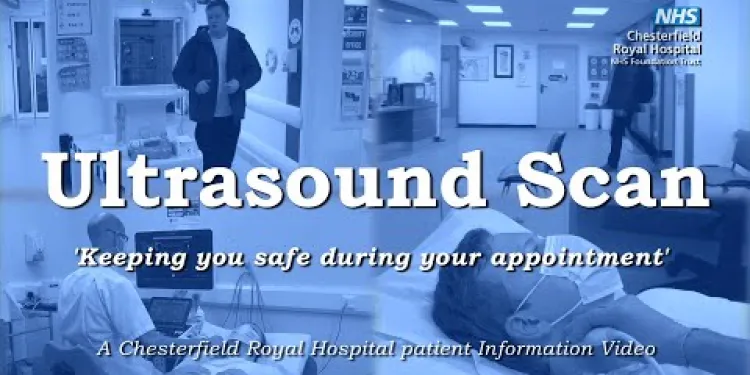
Your Ultrasound Appointment
Relevance: 100%
-

Having an Ultrasound scan at Manchester Royal Infirmary
Relevance: 65%
-

Your abdominal aortic aneurysm (AAA) screening appointment
Relevance: 44%
-
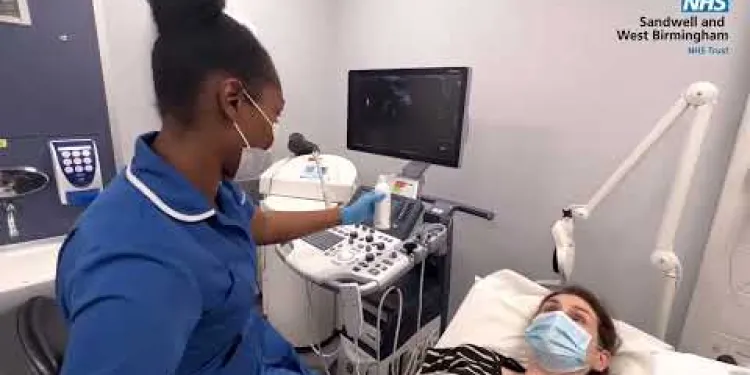
Post Menopausal Bleeding Clinic | A Guide to What Happens at An Appointment
Relevance: 43%
-

How do I book an appointment for the flu vaccine?
Relevance: 38%
-

How should I prepare for a Botox appointment?
Relevance: 38%
-

Can I get a dentist appointment on the NHS?
Relevance: 37%
-

What happens if I miss my NHS dental appointment?
Relevance: 37%
-

How can I get a COVID jab appointment?
Relevance: 37%
-
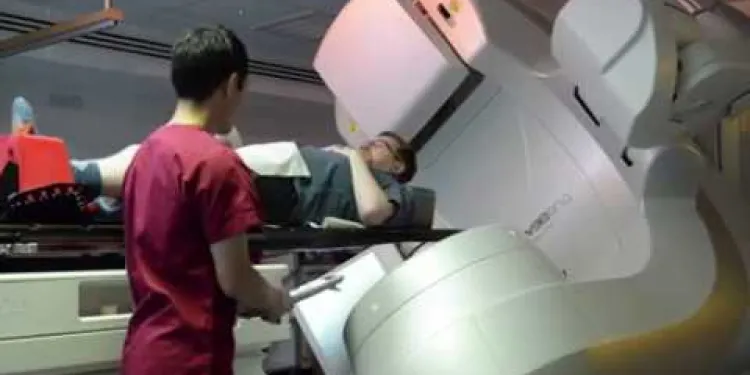
A Radiotherapy appointment in east and North Hertfordshire
Relevance: 37%
-

What should I bring to my NHS dental appointment?
Relevance: 36%
-

Can children get NHS dentist appointments?
Relevance: 35%
-

How long will I have to wait for an NHS dental appointment?
Relevance: 35%
-
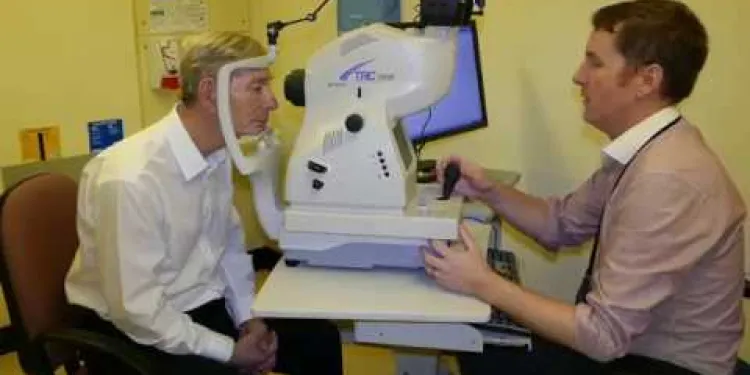
Derbyshire Diabetic Eye Screening - Your Screening Appointment
Relevance: 35%
-

What should I do if I miss my second COVID jab appointment?
Relevance: 35%
-
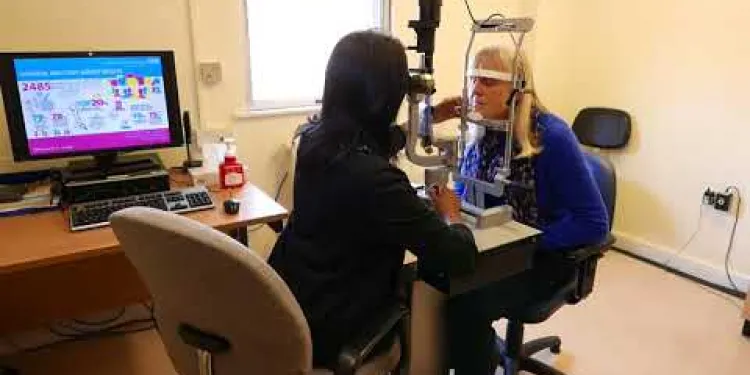
Derbyshire Diabetic Eye Screening - Assessment Clinic Appointment
Relevance: 35%
-

Are all dental appointments free on the NHS?
Relevance: 34%
-

Autism Assessment - What Happens in Your Appointment
Relevance: 33%
-

Can I get an emergency NHS dental appointment?
Relevance: 32%
-

MRI Scanner walkthrough - what to expect at your appointment
Relevance: 31%
-

NHS to Expand Digital Health Services to Reduce Appointment Backlogs
Relevance: 31%
-
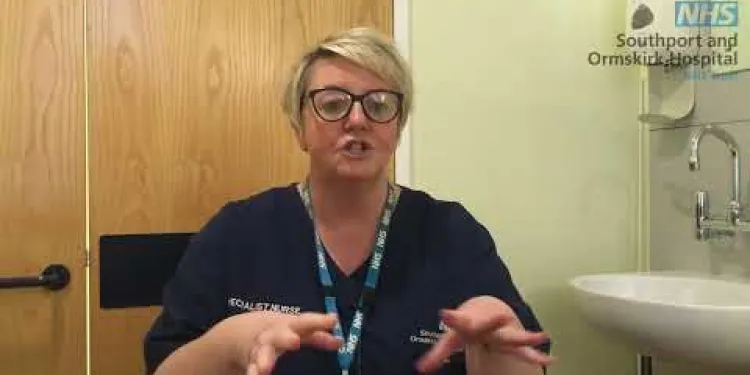
What to expect from your Colposcopy appointment
Relevance: 30%
-

How can I find an NHS dentist for an appointment?
Relevance: 29%
-

Do I need to make an appointment to visit a food bank?
Relevance: 28%
-

Eczema - Your child's appointment | Dermatology | Paediatrics
Relevance: 28%
-

What should I do if I can't get an NHS dentist appointment?
Relevance: 26%
-
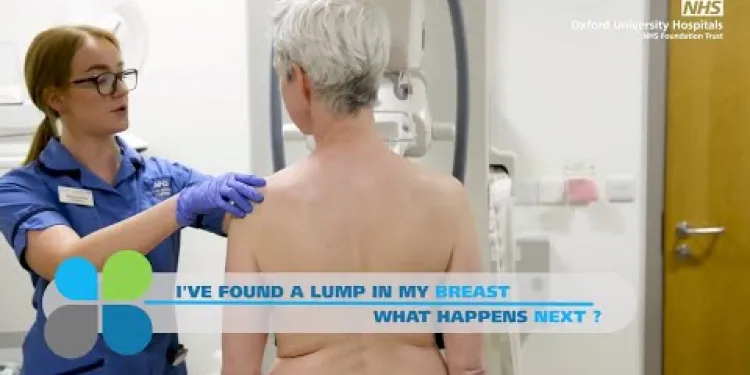
I've found a lump in my breast - What happens next? The breast diagnostic clinic
Relevance: 25%
-

Judicial Appointments Under Scrutiny as Diversity Reports Spark Debate
Relevance: 25%
-
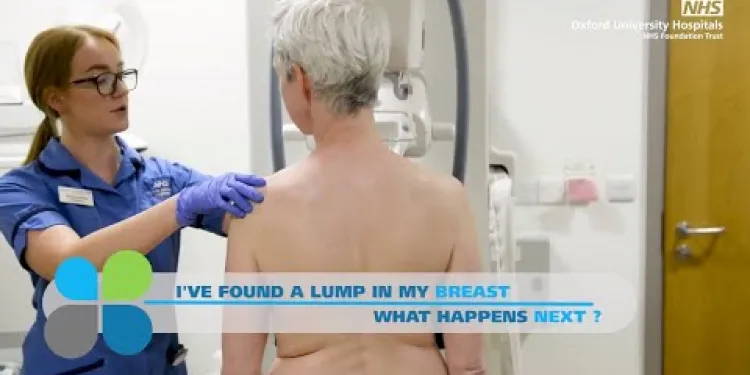
I've found a lump in my breast - What happens next? The breast diagnostic clinic
Relevance: 24%
-

What if my pregnancy test is positive?
Relevance: 22%
-

Can the test be performed during my menstrual period?
Relevance: 21%
-

How long does an IVF cycle take?
Relevance: 20%
-

How is testicular cancer diagnosed?
Relevance: 19%
-

Abdominal Aortic Aneurysm (AAA) screening programme
Relevance: 18%
-

Patient Information Video - Leeds Stress Echocardiography Service
Relevance: 17%
-

How is thrombosis diagnosed?
Relevance: 17%
-
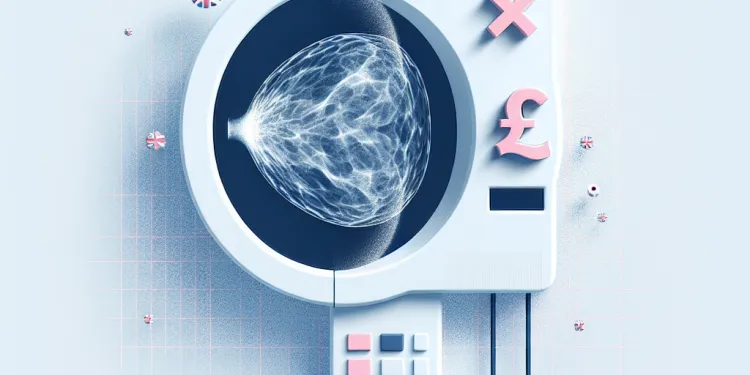
What happens during a mammogram?
Relevance: 16%
-

How is Carpal Tunnel Syndrome diagnosed?
Relevance: 16%
-

Get cancer symptoms checked by your GP | NHS
Relevance: 16%
-

NHS breast cancer screening
Relevance: 16%
Your Ultrasound Appointment
What is an Ultrasound Scan?
An ultrasound scan, also known as a sonogram, is a non-invasive medical procedure that uses high-frequency sound waves to create images of the inside of your body. It helps in diagnosing and monitoring various medical conditions by providing real-time images of organs, tissues, and blood flow. Common areas examined include the abdomen, pelvis, heart, and blood vessels.Preparing for Your Appointment
Preparation for an ultrasound scan varies depending on the type of scan you are having. For an abdominal ultrasound, you might be asked to fast for several hours beforehand. For a pelvic ultrasound, you may need to drink water and have a full bladder. It's crucial to follow the specific instructions given by your healthcare provider to ensure accurate results. Always wear comfortable clothing and consider bringing a list of any medications you're currently taking.What to Expect During the Scan
Upon arrival, you will be directed to a private room and asked to lie on an examination bed. A trained sonographer will apply a special gel to the area of your body being examined. This gel helps in transmitting sound waves and ensures clear images. The sonographer will then move a small handheld device called a transducer over your skin. Most people find the procedure painless, although you may feel slight pressure from the transducer.Post-Appointment Information
After the scan, the gel will be wiped off, and you can immediately resume your normal activities. The sonographer will typically not provide results right away. Instead, the images will be reviewed by a radiologist, and the results will be sent to your referring doctor. Your doctor will then discuss the findings with you during a follow-up appointment. If any further action is needed, your doctor will guide you on the next steps.Importance of Ultrasound Scans
Ultrasound scans are essential diagnostic tools in medical care. They are effective in monitoring the development of fetuses in pregnant women, detecting abnormalities in various organs, guiding procedures like needle biopsies, and diagnosing conditions such as gallstones and heart disease. The non-invasive nature of ultrasounds makes them a preferred choice for many patients and healthcare providers in the UK. Remember, if you have any questions or concerns about your ultrasound appointment, don't hesitate to contact your healthcare provider for more information.Your Ultrasound Appointment
What is an Ultrasound Scan?
An ultrasound scan, also called a sonogram, is a safe and simple medical test. It uses sound waves to make pictures of the inside of your body. It helps doctors see how organs and blood are working. Doctors often check areas like your belly, heart, and blood vessels.Preparing for Your Appointment
Getting ready for an ultrasound can be different depending on the type of scan. For a belly scan, you might have to stop eating for a while before your test. For a pelvic scan, you might need to drink water so your bladder is full. It's important to do what your doctor tells you to get good results. Wear comfy clothes and bring a list of any medicines you take.What to Expect During the Scan
When you arrive, you'll go to a private room and lie down on a bed. A trained person called a sonographer will put special gel on the body part being checked. This gel helps to make the pictures clear. Then, the sonographer will gently move a small tool over your skin. The test doesn’t usually hurt, but you might feel a little pressure.Post-Appointment Information
After the scan, the gel will be cleaned off, and you can go back to your normal activities. The sonographer won't give you results straight away. A doctor called a radiologist will look at the pictures and send the results to your doctor. Your doctor will talk to you about the results later. If more actions are needed, your doctor will tell you what to do next.Importance of Ultrasound Scans
Ultrasound scans are important in healthcare. They help doctors see how babies grow in pregnant women, find problems in organs, help with procedures like taking a tissue sample, and find conditions like gallstones or heart problems. Ultrasounds do not hurt the body, so many people and doctors like them. If you have questions about your ultrasound appointment, ask your healthcare provider for more help. They can give you more information.Frequently Asked Questions
What should I expect during my ultrasound appointment?
During your ultrasound, a sonographer will apply a gel to the skin and move a small handheld device called a transducer over the area being examined. This creates images of the inside of your body.
How should I prepare for my ultrasound appointment?
Preparation varies; for some scans, you'll need a full bladder, so drink water beforehand. For others, fasting might be required. Your clinic will give specific instructions.
How long does an ultrasound appointment last?
An ultrasound generally takes between 15 to 45 minutes, depending on the type of exam and the area being examined.
Is an ultrasound safe?
Yes, ultrasounds are safe. They use sound waves, not radiation, to create images, and there are no known risks.
Can I eat before my ultrasound appointment?
It depends on the type of ultrasound. For some exams, you may need to fast. Your healthcare provider will give you specific instructions.
Will I get the results immediately?
Typically, the sonographer will not interpret the results. A radiologist will review the images and send a report to your doctor, who will discuss the results with you.
Do I need to remove my clothing for an ultrasound?
You may need to change into a hospital gown and remove clothing over the area being examined. The sonographer will provide instructions.
Can I bring someone with me to my ultrasound appointment?
Yes, you can usually bring a partner, friend, or family member with you, but due to COVID-19 restrictions, check with the clinic beforehand.
What types of ultrasound scans are there?
Common types include abdominal, pelvic, obstetric (during pregnancy), and musculoskeletal ultrasounds, among others.
Will the ultrasound be painful?
No, ultrasounds are generally painless, though you might feel slight pressure from the transducer.
What is the gel used for during an ultrasound?
The gel helps the transducer make better contact with your skin and improves the quality of the images.
How do ultrasounds work?
Ultrasounds use high-frequency sound waves to produce images of structures inside the body. The waves bounce off tissues and organs, creating echoes that are converted into visual images.
Can I see my baby during a pregnancy ultrasound?
Yes, you can see your baby during an obstetric ultrasound, and the sonographer may point out key features.
What should I do if I have my period during a pelvic ultrasound?
Ultrasound exams can usually be performed during menstruation, but check with your healthcare provider for specific guidance.
Can an ultrasound detect cancer?
Ultrasounds can help identify abnormal growths such as tumors, but further tests are usually required for a definitive diagnosis.
What will happen at my ultrasound visit?
When you have an ultrasound, a person called a sonographer will put some special gel on your skin. They will use a small tool called a transducer. They move this tool over the part of your body the doctor wants to look at. This helps make pictures of the inside of your body.
Getting Ready for Your Ultrasound Appointment
Do you have an ultrasound soon? Here are some easy steps to get ready:
- Wear comfortable clothes. This will make it easy to move and relax.
- Drink lots of water if they ask you to. This can help the doctor see better inside your body.
- Ask someone to come with you if you feel nervous. They can help you stay calm.
- Bring any papers or questions you have about the test.
Remember, it's okay to ask the doctor or nurse if you need help or have questions. You can also use tools like a checklist to make sure you have everything ready. Don't worry, everyone is there to help you!
Getting ready for a scan can be different. Sometimes, you need to have a full bladder, so you should drink water before you go. Other times, you might not be able to eat beforehand. The clinic will tell you exactly what you need to do.
How long does an ultrasound visit take?
An ultrasound visit usually takes about 30 minutes.
Here are some tips to help:
- Ask someone to go with you if you feel nervous.
- Look at pictures in the waiting room to stay calm.
- Tell your doctor if you have any questions.
- Bring something fun to do while you wait.
An ultrasound is a type of check-up with a special camera. It usually takes between 15 and 45 minutes. How long it takes can change depending on what part of the body the doctor is looking at.
Is an ultrasound safe?
An ultrasound is a kind of picture that doctors take to see inside your body. It does not hurt and is safe. It helps doctors know what is happening inside.
If you still have questions, you can:
- Ask your doctor or nurse to explain it.
- Use pictures or videos to understand better.
- Write down your questions before you see the doctor.
Yes, ultrasounds are safe. They use sound waves, not x-rays, to make pictures. There are no known dangers.
Can I eat before my ultrasound appointment?
Do not eat before your ultrasound appointment because it may affect the results. You can drink water, but avoid other drinks. If you are hungry, try eating a small meal a few hours before your appointment.
If you find it hard to remember, you can use a calendar or set an alarm to remind you. You can also ask a friend or family member to remind you not to eat.
It depends on the kind of ultrasound you are having. For some tests, you might need to stop eating and drinking for a while. Your doctor will tell you exactly what to do.
Will I see the answers right away?
Usually, the person who takes the pictures, called a sonographer, does not say what they mean. Another doctor, called a radiologist, looks at the pictures and writes a report. This report is sent to your doctor, who will talk about the results with you.
Do I need to take off my clothes for an ultrasound?
An ultrasound is a type of picture of the inside of your body. You might need to take off some clothes for the test. This helps the doctor get a better picture.
You can use a few things to help you feel better:
- Ask the doctor or nurse if you have questions.
- You may wear a special gown they give you.
- You might want to bring someone with you for help.
Remember, the doctor just wants to help you feel better.
You might need to put on special hospital clothes. You might have to take off clothes from the area that needs to be checked. The person helping you will tell you what to do.
Can I bring someone with me to my scan?
You can bring a friend or family member to your scan. It's a good idea to check with the clinic first to make sure they allow guests. Bringing someone can help you feel more comfortable. They can support you and share the experience. You might want to also bring something to help you relax, like a picture book or music. Don't forget to ask the clinic staff if you have any questions.
You can usually bring someone with you, like a partner, friend, or family member. But because of COVID-19, check with the clinic first to make sure.
What kinds of ultrasound scans are there?
Ultrasound scans use sound waves to make pictures of the inside of your body. Here are some types:
- Pregnancy Scan: This shows pictures of a baby inside a mother’s belly.
- Heart Scan: Doctors look at your heart to check if it's healthy.
- Organ Scan: This checks other body parts like your liver or kidneys.
If you feel unsure, ask a doctor or nurse to explain more. You can also use picture guides to help understand.
There are different kinds of ultrasound tests. Some are for your tummy, some are for your hips, some are for when you are having a baby, and some are for your muscles and bones.
Will the ultrasound hurt?
The ultrasound will not hurt.
The doctor will use a special machine to take pictures inside the body.
You might feel some pressure, but it should not be painful.
If you feel worried or scared, you can bring a friend or family member with you.
Ultrasounds usually do not hurt. You might feel a little pressure when the doctor presses on your skin.
Why do doctors use gel for an ultrasound?
Doctors use a special gel during an ultrasound. The gel helps the machine see inside the body better. It makes pictures on the screen clearer.
The gel is sticky, so it stays on your skin. It helps the ultrasound tool slide smoothly.
If you find reading hard, ask someone to help you understand. You can also use tools that read the words out loud for you.
The gel helps the tool touch your skin better. This makes the pictures clearer.
How do ultrasounds work?
An ultrasound is a machine that helps us see inside the body. It uses sound waves that are too high for us to hear. These sound waves bounce back, and the machine turns them into pictures.
Doctors use ultrasounds to look at babies inside a mom's belly or to check other body parts. It is a safe and painless way to see what is happening inside.
Helpful tips:
- Ask someone to explain the pictures if you do not understand.
- Use videos or apps for kids to learn more about ultrasounds.
- Talk to a doctor or nurse if you have questions.
Ultrasounds use special sound waves to make pictures of the inside of the body. The sound waves bounce off parts of the body, like tissues and organs. Then, they turn into pictures we can see.
Can I see my baby during an ultrasound when I'm pregnant?
Yes, you can see your baby during a pregnancy scan. The person taking the scan might show you important parts of your baby.
What to do if I have my period during a pelvic ultrasound?
If you have your period when you go for a pelvic ultrasound, tell the doctor or nurse. They will know what to do. You can use a pad instead of a tampon if that makes you more comfortable.
It’s okay to feel a bit worried. You can take deep breaths to help you relax. Bringing a friend or family member might also make you feel better.
You can often have an ultrasound test even if you are on your period. But it is a good idea to ask your doctor or nurse for advice.
Can an ultrasound find cancer?
An ultrasound is a special kind of picture that doctors use to look inside the body. It uses sound waves to make the picture. Sometimes, doctors use ultrasounds to find out if someone has cancer.
However, an ultrasound might not always see cancer. Doctors often use other tests too, like X-rays or MRIs, to be sure. If you have questions about medical tests, talk to a doctor or nurse. They can help explain.
To feel more comfortable with the words, you can:
- Ask someone to read the words with you.
- Use a dictionary to help with new words.
- Look at pictures that show how ultrasounds work.
Ultrasound scans can find unusual bumps like tumors. But doctors often need to do more tests to be sure what it is.
Useful Links
- Ergsy carfully checks the information in the videos we provide here.
- Videos shown by Youtube after a video has completed, have NOT been reviewed by ERGSY.
- To view, click the arrow in centre of video.
- Most of the videos you find here will have subtitles and/or closed captions available.
- You may need to turn these on, and choose your preferred language.
- Go to the video you'd like to watch.
- If closed captions (CC) are available, settings will be visible on the bottom right of the video player.
- To turn on Captions, click settings .
- To turn off Captions, click settings again.
More Items From Ergsy search
-

Your Ultrasound Appointment
Relevance: 100%
-

Having an Ultrasound scan at Manchester Royal Infirmary
Relevance: 65%
-

Your abdominal aortic aneurysm (AAA) screening appointment
Relevance: 44%
-

Post Menopausal Bleeding Clinic | A Guide to What Happens at An Appointment
Relevance: 43%
-

How do I book an appointment for the flu vaccine?
Relevance: 38%
-

How should I prepare for a Botox appointment?
Relevance: 38%
-

Can I get a dentist appointment on the NHS?
Relevance: 37%
-

What happens if I miss my NHS dental appointment?
Relevance: 37%
-

How can I get a COVID jab appointment?
Relevance: 37%
-

A Radiotherapy appointment in east and North Hertfordshire
Relevance: 37%
-

What should I bring to my NHS dental appointment?
Relevance: 36%
-

Can children get NHS dentist appointments?
Relevance: 35%
-

How long will I have to wait for an NHS dental appointment?
Relevance: 35%
-

Derbyshire Diabetic Eye Screening - Your Screening Appointment
Relevance: 35%
-

What should I do if I miss my second COVID jab appointment?
Relevance: 35%
-

Derbyshire Diabetic Eye Screening - Assessment Clinic Appointment
Relevance: 35%
-

Are all dental appointments free on the NHS?
Relevance: 34%
-

Autism Assessment - What Happens in Your Appointment
Relevance: 33%
-

Can I get an emergency NHS dental appointment?
Relevance: 32%
-

MRI Scanner walkthrough - what to expect at your appointment
Relevance: 31%
-

NHS to Expand Digital Health Services to Reduce Appointment Backlogs
Relevance: 31%
-

What to expect from your Colposcopy appointment
Relevance: 30%
-

How can I find an NHS dentist for an appointment?
Relevance: 29%
-

Do I need to make an appointment to visit a food bank?
Relevance: 28%
-

Eczema - Your child's appointment | Dermatology | Paediatrics
Relevance: 28%
-

What should I do if I can't get an NHS dentist appointment?
Relevance: 26%
-

I've found a lump in my breast - What happens next? The breast diagnostic clinic
Relevance: 25%
-

Judicial Appointments Under Scrutiny as Diversity Reports Spark Debate
Relevance: 25%
-

I've found a lump in my breast - What happens next? The breast diagnostic clinic
Relevance: 24%
-

What if my pregnancy test is positive?
Relevance: 22%
-

Can the test be performed during my menstrual period?
Relevance: 21%
-

How long does an IVF cycle take?
Relevance: 20%
-

How is testicular cancer diagnosed?
Relevance: 19%
-

Abdominal Aortic Aneurysm (AAA) screening programme
Relevance: 18%
-

Patient Information Video - Leeds Stress Echocardiography Service
Relevance: 17%
-

How is thrombosis diagnosed?
Relevance: 17%
-

What happens during a mammogram?
Relevance: 16%
-

How is Carpal Tunnel Syndrome diagnosed?
Relevance: 16%
-

Get cancer symptoms checked by your GP | NHS
Relevance: 16%
-

NHS breast cancer screening
Relevance: 16%


